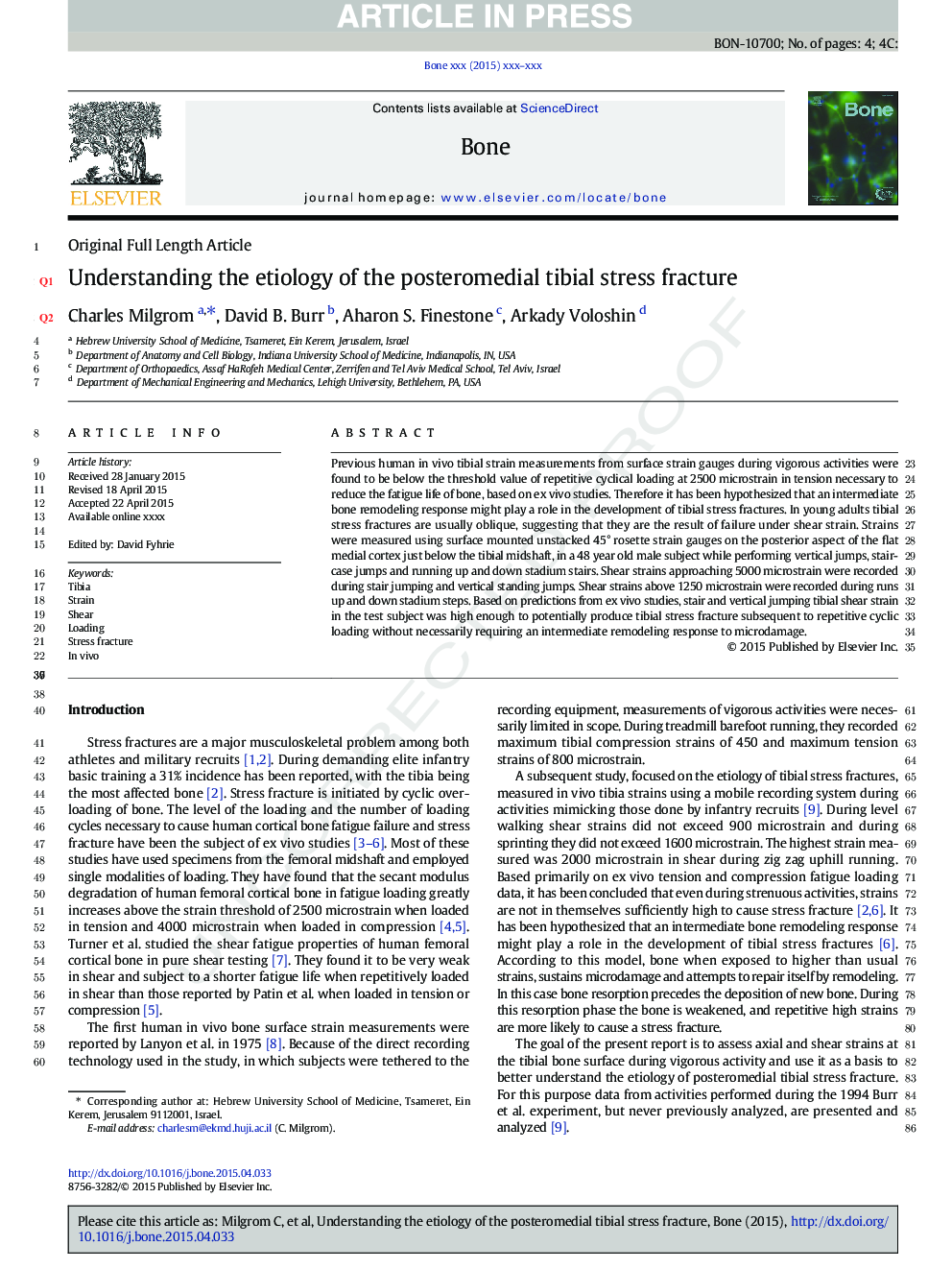| کد مقاله | کد نشریه | سال انتشار | مقاله انگلیسی | نسخه تمام متن |
|---|---|---|---|---|
| 5889579 | 1568141 | 2015 | 4 صفحه PDF | دانلود رایگان |
عنوان انگلیسی مقاله ISI
Understanding the etiology of the posteromedial tibial stress fracture
ترجمه فارسی عنوان
درک علل شکستگی استرس پس از سانحه تیبال
دانلود مقاله + سفارش ترجمه
دانلود مقاله ISI انگلیسی
رایگان برای ایرانیان
کلمات کلیدی
موضوعات مرتبط
علوم زیستی و بیوفناوری
بیوشیمی، ژنتیک و زیست شناسی مولکولی
زیست شناسی تکاملی
چکیده انگلیسی
Previous human in vivo tibial strain measurements from surface strain gauges during vigorous activities were found to be below the threshold value of repetitive cyclical loading at 2500 microstrain in tension necessary to reduce the fatigue life of bone, based on ex vivo studies. Therefore it has been hypothesized that an intermediate bone remodeling response might play a role in the development of tibial stress fractures. In young adults tibial stress fractures are usually oblique, suggesting that they are the result of failure under shear strain. Strains were measured using surface mounted unstacked 45° rosette strain gauges on the posterior aspect of the flat medial cortex just below the tibial midshaft, in a 48 year old male subject while performing vertical jumps, staircase jumps and running up and down stadium stairs. Shear strains approaching 5000 microstrain were recorded during stair jumping and vertical standing jumps. Shear strains above 1250 microstrain were recorded during runs up and down stadium steps. Based on predictions from ex vivo studies, stair and vertical jumping tibial shear strain in the test subject was high enough to potentially produce tibial stress fracture subsequent to repetitive cyclic loading without necessarily requiring an intermediate remodeling response to microdamage.
ناشر
Database: Elsevier - ScienceDirect (ساینس دایرکت)
Journal: Bone - Volume 78, September 2015, Pages 11-14
Journal: Bone - Volume 78, September 2015, Pages 11-14
نویسندگان
Charles Milgrom, David B. Burr, Aharon S. Finestone, Arkady Voloshin,
